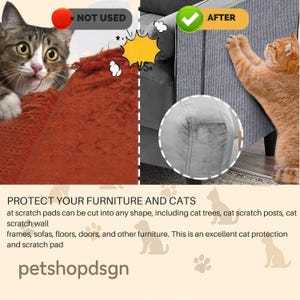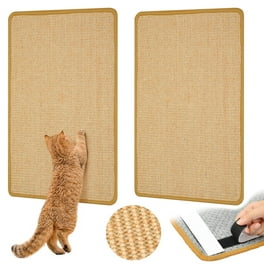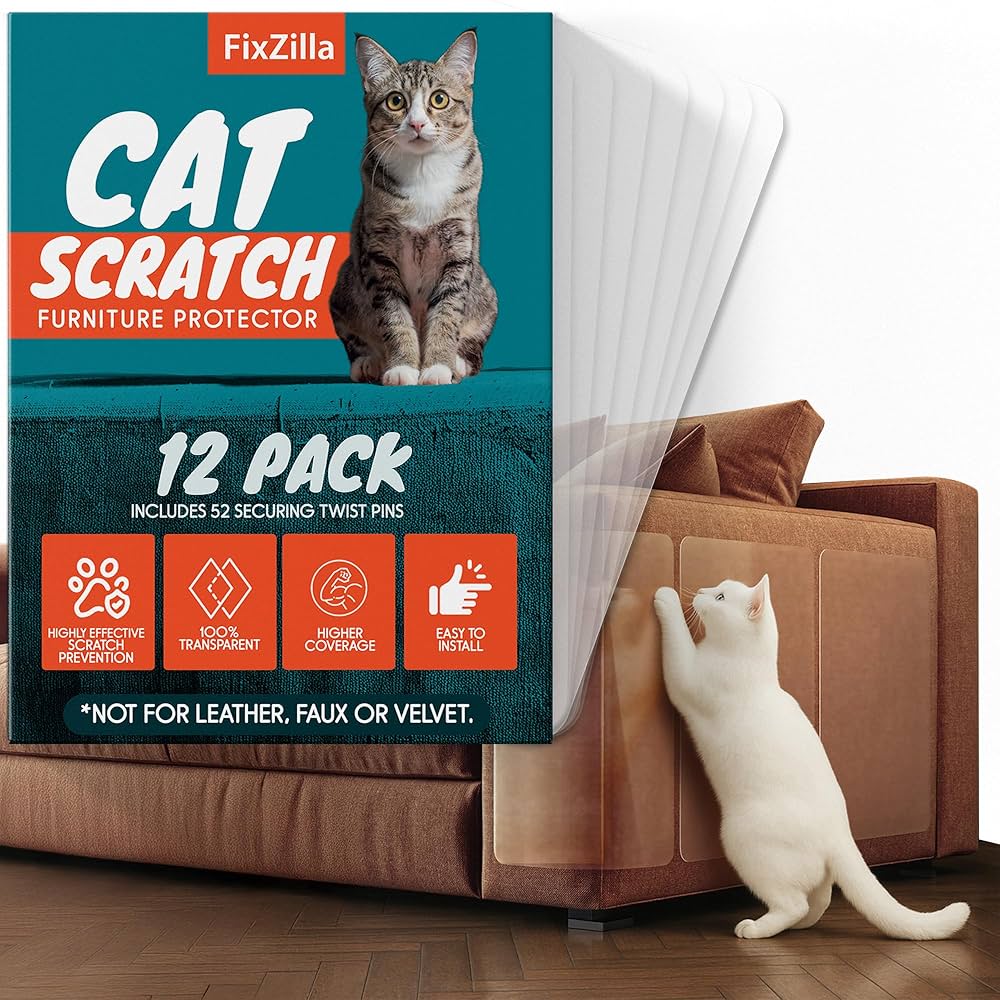Are you tired of finding tiny claw marks and shredded wallpaper every time you look at your walls? Scratching is a natural behavior for cats, but it can be quite frustrating when your furry friend turns your home into their personal playground.
You might feel like you’re constantly playing defense, trying to protect your walls from tiny, determined paws. But what if there was a way to redirect that energy and save your walls from further damage? Imagine walking into a room and not having to worry about the state of your walls.
Picture your cat happily engaged in activities that keep them satisfied and your home intact. In this guide, we’ll explore effective strategies to stop your cat from scratching walls. These tips are designed to help you understand your cat’s needs and create a harmonious living space for both you and your feline companion. Read on to discover how you can transform your home and make your cat happier at the same time.
Why Cats Scratch Walls
Cats scratching walls can be puzzling and frustrating for pet owners. Understanding why cats scratch walls helps manage this behavior better. Scratching is a natural part of a cat’s life, rooted in instincts and communication. Several reasons explain why cats target walls.
Natural Instincts
Scratching is a natural behavior for cats. It helps keep their claws sharp and healthy. Cats stretch their muscles when they scratch, which feels good. Scratching also removes old claw layers, making new claws ready for use.
Marking Territory
Cats have scent glands in their paws. When they scratch walls, they leave their scent behind. This marks their territory and tells other animals that this space belongs to them. It is a way of communication in the cat world.
Stress And Boredom
Scratching can increase when cats feel stressed or bored. It helps them release energy and tension. Cats need mental and physical stimulation to stay happy. Lack of play or attention may cause more wall scratching.

Credit: www.summerfield-school.com
Identifying Scratching Triggers
Understanding why your cat scratches walls is the first step to stopping this behavior. Cats don’t just scratch randomly; specific triggers cause them to act this way. Identifying these triggers helps you address the root of the problem instead of just treating the symptoms.
Environmental Factors
Look around your home for things that might encourage your cat to scratch walls. Is your furniture placed in a way that limits your cat’s scratching options? Sometimes, a lack of scratching posts or toys makes walls the easiest target.
Noise and activity levels also affect scratching. Loud sounds or sudden movements can stress your cat, prompting scratching as a way to cope. Have you noticed if your cat scratches more during busy times or when new people visit?
Lighting and temperature changes can influence behavior too. Cats might scratch to mark territory in areas where they feel insecure. Check if your cat favors certain walls during specific times of the day or in certain rooms.
Behavioral Patterns
Cats use scratching to communicate and exercise. It’s part of their natural routine to sharpen claws, stretch muscles, and leave scent marks. Observe when your cat usually scratches—is it after waking up, before meals, or during play?
Stress and boredom are common triggers. If your cat spends a lot of time alone or lacks stimulation, scratching might increase. Have you tried adding interactive toys or setting up climbing areas to keep your cat engaged?
Changes in your cat’s environment, like moving furniture or introducing new pets, can also shift scratching habits. Tracking these changes alongside scratching incidents reveals patterns you might miss otherwise. What recent changes have happened around your home?
Protecting Your Walls
Protecting your walls from a cat’s scratching can save you from costly repairs and keep your home looking neat. Cats scratch to mark territory and sharpen their claws, but that doesn’t mean your walls have to suffer. There are practical ways to shield your walls while still respecting your cat’s natural behavior.
Using Wall Covers
Wall covers act as a physical barrier between your cat’s claws and your paint or wallpaper. You can use clear plastic sheets, acrylic panels, or even decorative wall protectors that blend with your room’s style. These covers are easy to install and remove, making them a flexible option for any space.
Think about areas where your cat scratches most, like corners or near furniture. Placing wall covers there can instantly reduce damage. Have you noticed how some cats avoid rough surfaces? A smooth plastic cover can discourage scratching because it doesn’t provide the texture they want.
Applying Deterrent Sprays
Deterrent sprays use scents or tastes that cats dislike but are safe for your home. Applying these sprays on walls can discourage your cat from scratching those spots. Many pet stores offer sprays with natural ingredients like citrus or bitter apple, which are effective and non-toxic.
Test the spray on a small wall area first to avoid discoloration. Consistency is key—reapply regularly, especially after cleaning. Have you tried combining deterrent sprays with wall covers? This combo can double the protection and train your cat to avoid those areas faster.

Credit: www.etsy.com
Providing Alternatives
Stopping your cat from scratching walls can be easier when you provide them with better alternatives. Cats scratch to mark territory, stretch their muscles, and keep their claws healthy. Offering appealing options helps redirect their natural behavior away from your walls.
Choosing Scratching Posts
Pick scratching posts that feel good to your cat’s paws. Posts wrapped in sisal or carpet often work well because they mimic the texture cats enjoy. Make sure the post is tall enough for your cat to stretch fully—around 28 to 32 inches is ideal.
Also, consider different shapes. Some cats prefer vertical posts, while others like horizontal pads or angled boards. What type does your cat seem to favor when they scratch furniture or other surfaces?
Placement Tips
Where you put the scratching posts matters as much as the posts themselves. Place them near the areas your cat already scratches, like next to the wall spots or furniture they target. This makes the transition to the new post easier.
Try putting a post near your cat’s favorite sleeping spot or close to where they enter a room. Cats often scratch after waking up or when marking territory. Have you noticed patterns in your cat’s scratching habits that could guide you?
Encouraging Use
Make the new scratching post exciting and inviting. Use catnip or toys to attract your cat to the post. Reward them with treats or affection when they use it to reinforce the good behavior.
If your cat hesitates, try gently placing their paws on the post or mimicking scratching motions. Sometimes, your active encouragement can make all the difference. How do you currently motivate your cat to use new things around the house?
Training And Positive Reinforcement
Training your cat and using positive reinforcement can change unwanted scratching behavior without stress. It takes patience, but you can guide your cat toward better habits by rewarding good behavior and gently redirecting their actions. Have you noticed how quickly cats respond when something feels rewarding to them?
Redirecting Behavior
When your cat starts scratching the walls, gently move them to a designated scratching post or pad. Make sure the new spot is appealing—choose one with a texture and size your cat enjoys. Placing the scratching post near the usual scratching area can help your cat make the connection quickly.
Use toys or catnip to attract your cat to the new scratching surface. This encourages them to explore and use the post instead of the wall. If your cat ignores the post, try changing its location or type until you find what works.
Reward Systems
Catch your cat using the scratching post and immediately offer praise or a small treat. This creates a positive link between the action and the reward. Over time, your cat will choose the post more often to earn those rewards.
Consistency is key. Reward every successful scratch initially, then gradually reduce the treats but keep the praise. This keeps your cat motivated and helps solidify the habit.
Have you tried rewarding your cat right after they scratch the right surface? The timing can make all the difference in training success.

Credit: www.walmart.com
Addressing Stress And Anxiety
Stress and anxiety often trigger cats to scratch walls as a way to release tension or mark their territory. Understanding and addressing these emotional triggers can reduce unwanted scratching behavior significantly. You might find that calming your cat’s environment helps them feel safer and less inclined to damage your walls.
Environmental Enrichment
Adding stimulating activities can keep your cat’s mind and body busy, reducing stress. Try placing new toys, scratching posts, or puzzle feeders around your home. Cats love climbing, so a cat tree or window perch can provide a safe escape and mental stimulation.
Think about your cat’s daily routine—does it include enough playtime and interaction? Increasing these can ease anxiety and lower the need to scratch walls out of frustration. Watch how your cat reacts to different toys or spaces, and adjust based on what keeps them most engaged.
Calming Products
Calming aids can make a big difference in managing feline anxiety. Products like pheromone diffusers release scents that mimic natural cat pheromones, helping your cat feel more relaxed. You might also try calming collars or sprays, which offer a similar soothing effect.
Some cats respond well to natural supplements or herbal remedies, but always check with your vet before introducing new products. Have you noticed a change in your cat’s behavior with these aids? Sometimes, a little extra comfort is all they need to stop scratching walls.
When To Seek Professional Help
Sometimes, stopping a cat from scratching walls needs more than home solutions. Persistent scratching can signal health or behavior problems. Recognizing when to get expert help protects your cat and your home. Knowing the right time to act can prevent stress and damage.
Veterinary Advice
Visit a vet if scratching seems painful or unusual. Cats may scratch due to skin issues, allergies, or injuries. A vet checks for infections or parasites causing discomfort. They can also rule out arthritis or other health problems. Proper diagnosis helps find the right treatment fast.
Behavioral Specialists
Behavioral experts help when scratching is linked to stress or anxiety. They study your cat’s habits and environment for triggers. Specialists suggest training or environmental changes to reduce scratching urges. They offer personalized plans to manage behavior safely and kindly. Their guidance supports a happier cat and a peaceful home.
Frequently Asked Questions
How Can I Prevent My Cat From Scratching Walls?
Provide scratching posts near walls to redirect your cat’s scratching. Use deterrent sprays on walls. Trim your cat’s nails regularly to reduce damage.
Why Does My Cat Scratch Walls Excessively?
Cats scratch to mark territory, stretch muscles, and sharpen claws. Stress, boredom, or lack of suitable scratching surfaces may increase wall scratching.
What Materials Discourage Cats From Scratching Walls?
Sticky tapes, aluminum foil, or double-sided tape on walls deter cats. Cats dislike rough or sticky textures, helping protect your walls effectively.
Can Training Stop A Cat From Scratching Walls?
Yes, positive reinforcement and redirection to scratching posts work. Reward your cat when it uses posts and gently discourage wall scratching.
Conclusion
Stopping your cat from scratching walls takes patience and care. Provide scratching posts or pads nearby. Use safe sprays to protect wall areas. Reward your cat when it uses the right spots. Keep your cat’s nails trimmed regularly. These steps help keep walls safe and your cat happy.
Small changes make a big difference over time. Your home stays nice. Your cat stays calm. A peaceful place for both of you.

